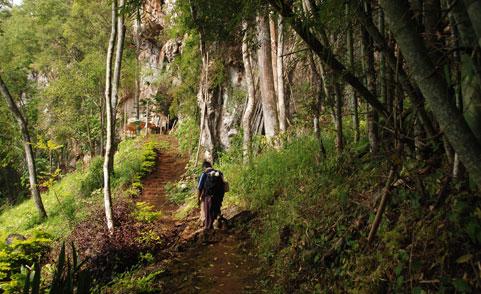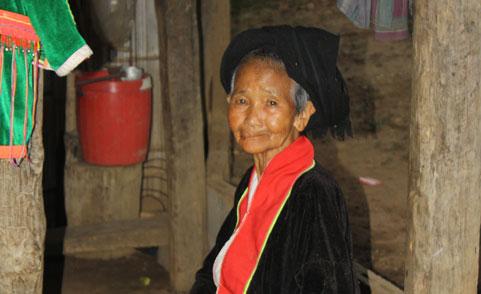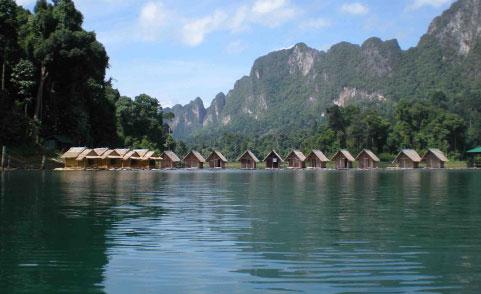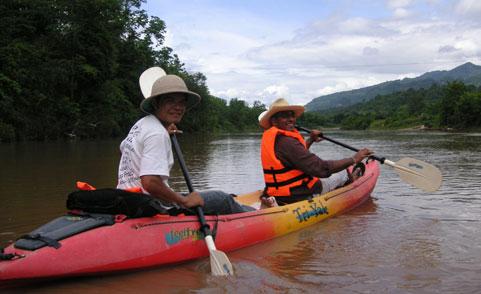This week we checked out the Kaew Mae Pan Nature Trail in Doi Inthanon National Park...
Shan

Living in the majestic northwest corner of Thailand’s border with Burma you will find a village that was founded by migrant Shan farmers early in the nineteenth century. These farmers were descendants of a powerful group that had founded the Nanchao Kingdom of the Tai in China around the 7th century.The group moved back and forth between Thailand and Burma for several centuries. Their first settlement in Thailand came in 1831, the area later became known as Mae Hong Son. Today this group calls themselves Taiyai or “big Thai”.
The Tai were farmers by trade which is what attracted them to this particular area. The wide range in temperatures allowed them to do farming all year long. It was cold enough in the winter to grow delicate greens and hot enough in the summer to grow rice. The area was also prone to heavy rains which meant good crop yields year round. Around half of the Shan villagers still live as farmers today, primarily producing rice and garlic.
The Shan are and always have been traditional Theravada Buddhists. Their religion was greatly influenced by the Burmese Buddhists. The religious beliefs of the group are deeply rooted in their society. The elaborate festivals and traditions celebrated in honor of their religious beliefs each year are of great importance to their way of life. To this day the Tai or Shan perform some of the most colorful and visually beautiful Buddhist festivals in all of Thailand. In fact, many of Shan religious celebrations like the 3 day long Poi Sang Long festival that occurs annually in April have become major tourist attractions.
Shan are a very independent people who speak their own language, a special dialect of Shan. Before Mae Hong Son became a part of Thailand Sahn had their own government and their own kingdom. During the late nineteenth century the king Phaka Toekshan built the Wat Phra Norn of Mae Hong Son. This famous temple contains a awe-inspiring twelve meter Burmese Buddha. This temple still stands today overlooking the city and is where you will find the cremated ashes of all the former kings.
Shan migrated from China bringing with them their own distinct musical styles. They are a part of the city of Chiang Mai cultural diversity even if you arguably state they are not hilltribes as such. The music functions in worship, performed in tribal ceremonies.
Under the title “Sedentism in the Mekong Region” an international...









